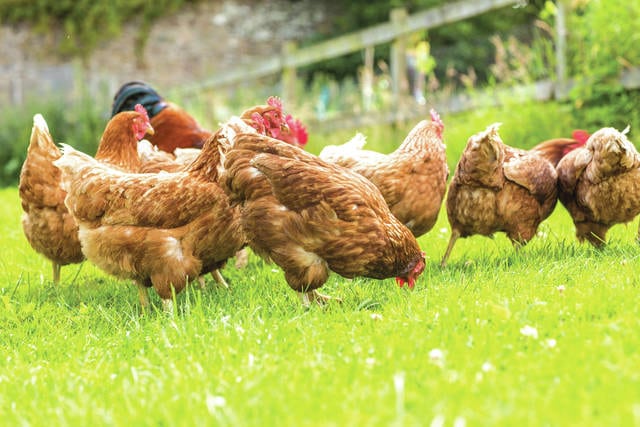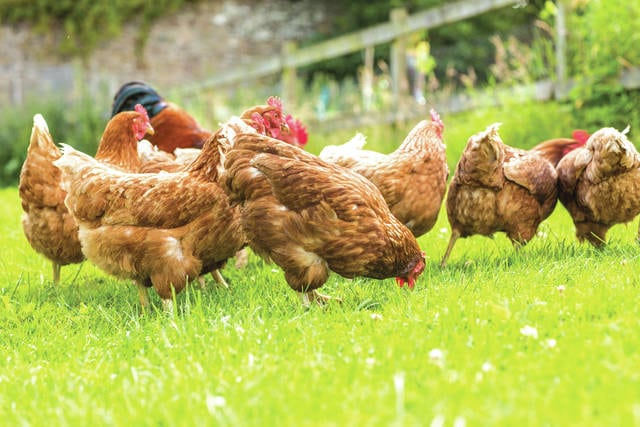

DARKE COUNTY — Ohio poultry and egg producers should be cautiously optimistic in 2017 according to Jim Chakeres, executive vice president of the Ohio Poultry Association.
More than 600 chicken, turkey and egg farmers belong to the Ohio Poultry Association, which takes an active role in educating the public and sharing industry information among its members.
Chakeres spoke with The Daily Advocate on how he sees 2017, and beyond, shaping up for poultry farmers in the Buckeye State.
Naturally, with a new president in office, every industry faces some level of uncertainty. As it regards the Trump administration, Chakeres said he thinks it is “too early to tell” how the administration will affect agriculture, and poultry producers, in particular.
“There’s an opportunity for a new outlook in terms of regulation, but it’s too early to guess what may be coming down the road or what may be repealed,” he said. “Obviously we need regulations, but there needs to be a balance with common-sense and what’s practical, and sometimes that gets out of hand.”
Even though poultry producers as a whole can look forward to the coming year with some optimism, government regulations may tamper expectations for farmers who raise “organic” poultry.
New rules announced by the USDA days before President Trump was sworn in would require organically grown livestock to have enough space to lie down, turn around, stand up, and fully stretch their limbs.
While this was seen as a win for animal rights activists, the new administration may potentially reverse or revise the regulations. The economic effect with or without the new rules cannot yet be determined.
As well, the Senate has yet to approve Trump’s nominee for Agriculture Secretary, Sonny Perdue, keeping agriculture in the dark.
Amidst the uncertainty, poultry producers may also continue to have lingering fears of a new avian flu outbreak like that which occurred in 2015. Chakeres indicated, however, that producers are much better prepared than they were previously.
“On the farm, and in processing, there have been major protocols put in place in terms of biosecurity. Our biosecurity was good, now our biosecurity is even better,” he said.
“Any aspect of poultry and egg production in Ohio but in the United States as a whole, we have seen major updates in biosecurity,” Chakeres explained. “Our folks have, literally, in Ohio, spent millions of dollars in investments in biosecurity programs and new equipment. We’re seeing additional truck washes, we’re seeing physical barriers installed, like fences and gates. Several farms have gone to a shower-in, shower-out facilities. There’s been time put into employee education, a lot of investment in that area.”
The U.S. Department of Agriculture (USDA) report USDA Agricultural Projections to 2026, released in February 2017, reveals tempered optimism for the American poultry industry.
“Over the next decade, broiler and turkey producers are expected to enjoy higher average poultry-feed-price ratios than the previous 10-year average, suggesting greater returns to producers and increased production,” the report states. “However, production growth is expected to be slower than in the previous 10-year period, with slower gains in domestic disappearance per capita and strong export competition. While poultry production is expected to continue to increase, growth of slightly less than 1 percent per year will be slower than either beef or pork production. Higher numbers of birds and higher average slaughter weights will both contribute to production growth.”
The report further goes on to say, “U.S. poultry exports (including broilers, turkey, and mature chickens) are expected to grow faster in the first part of the projection period due to an ongoing recovery from avian influenza. The United States is expected to retain its position as second largest exporter of poultry after Brazil while the EU remains a distant third, exporting roughly one-third of U.S. levels.”
Though he said he was not in a position to predict future consumer prices, Chakeres says he expects chicken, turkey and egg products to remain affordable in the grocery stores.
”Even when we saw some of those higher prices during the avian influenza crisis a couple of years ago, in terms of a protein source, eggs and poultry, even at those higher prices, remained one of the most affordable protein options in the grocery store,” he said.
Despite what uncertainty exists in the industry, Chakeres thinks the future of poultry in Ohio remains bright.
“I think Ohio is very uniquely situated in terms of the poultry industry,” he explained. “We are very geographically close to a very large portion of the United States population. We are part of the Corn Belt, so that’s important in terms of providing feedstuff for the birds. I think we are going to continue seeing a slow-to-moderate growth time. We’re looking to the future, to retain that slow-smart growth within the poultry industry.”
“Ohio poultry and egg farmers are concerned with many different things: animal welfare, taking the best care of their hens and birds, environmental concerns — the farmers live where their birds are produced, they’re a vital part of the community,” he said.





